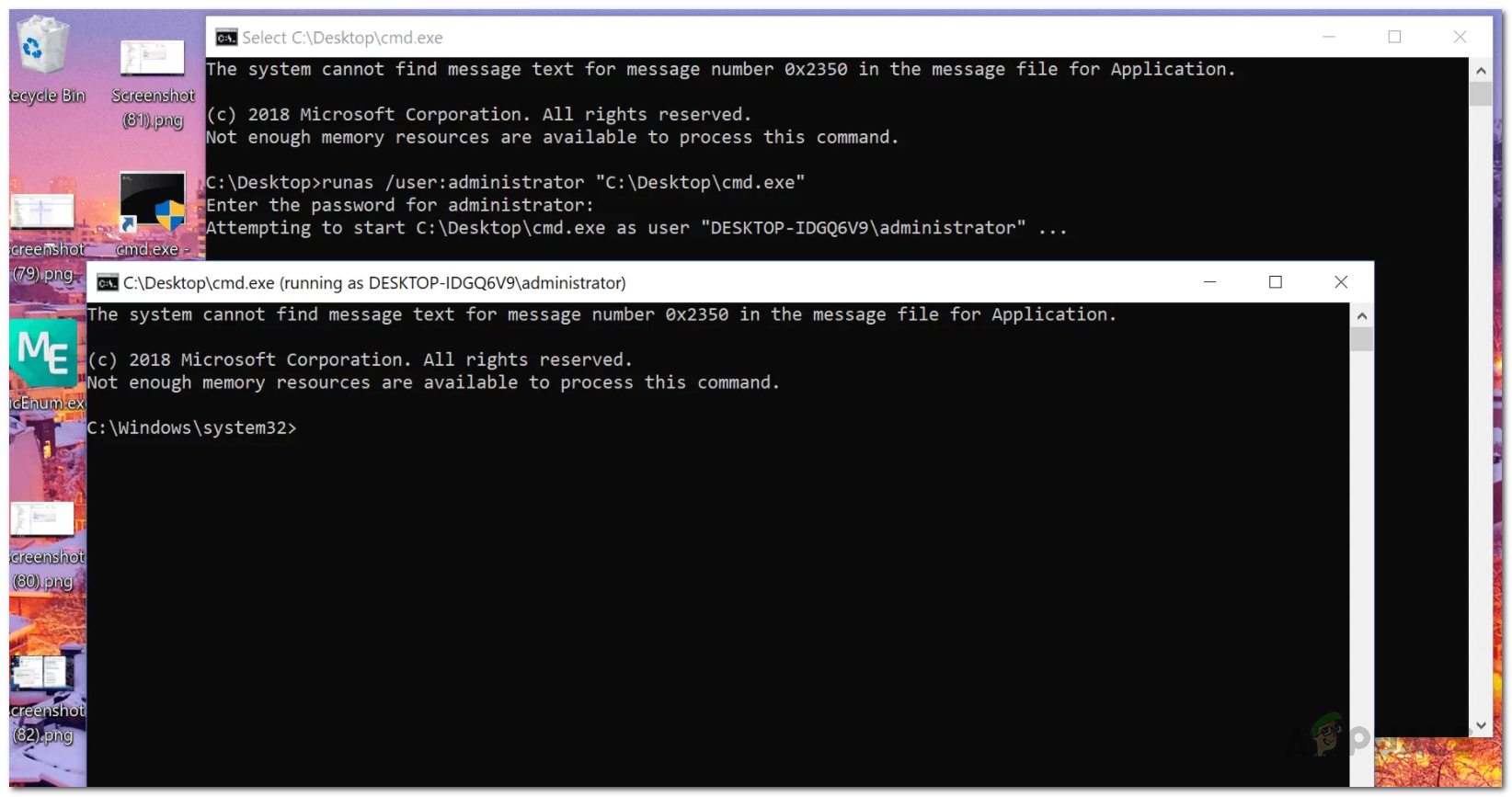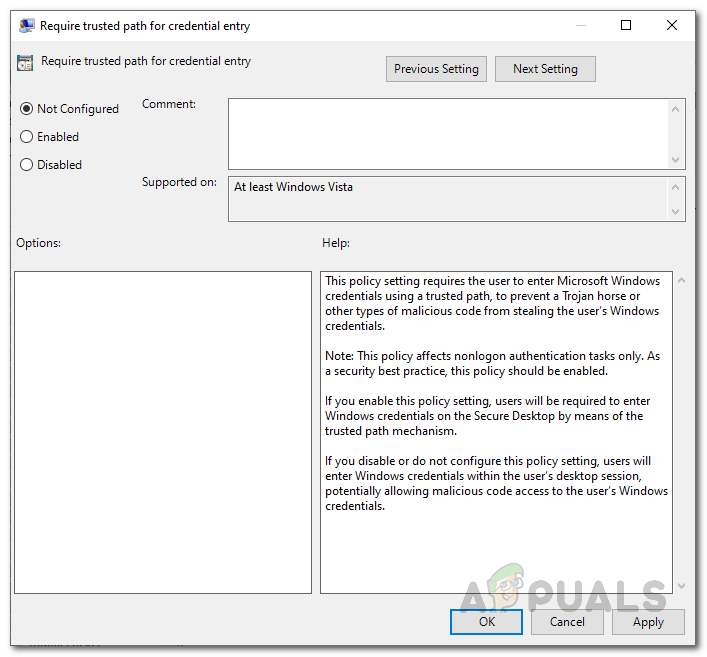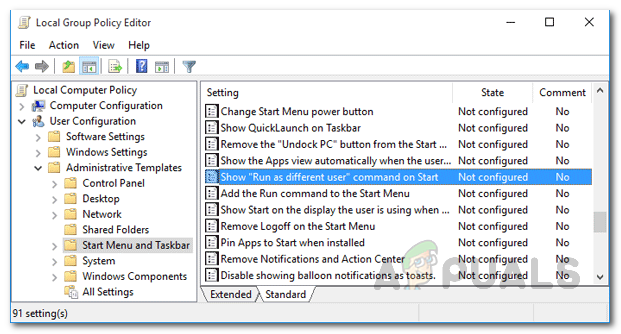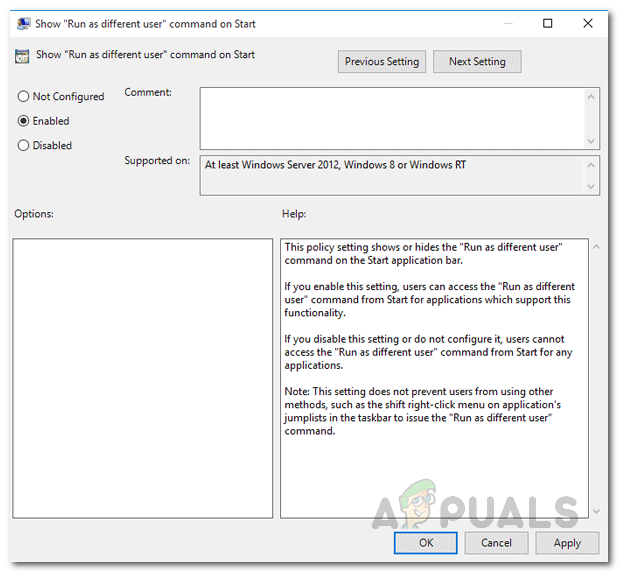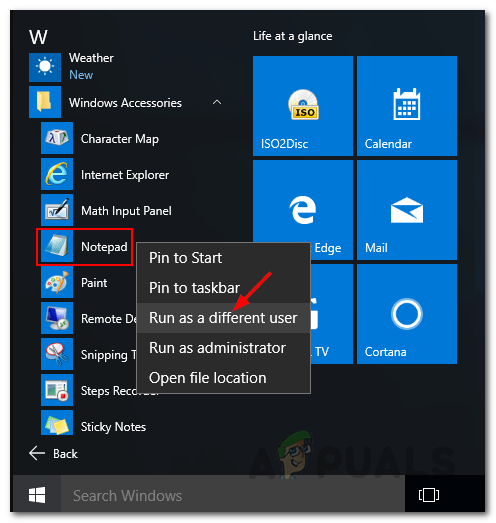This functionality is enabled by the RunAs program that comes built-in in Windows. The RunAs program is widely used for this purpose. This can be accessed through the command prompt along with the Windows Explorer, so if you prefer a graphical user interface, there is something for you as well. In order to make use of this program, there is a service that needs to be running in the background. The RunAs program depends on the Secondary Log-on service to be able to run various files as a different user. If the service is not running and is stopped, you won’t be able to achieve the intended result. Therefore, make sure that the service is running by looking for it in the Windows Services window. As it turns out, there are several ways of running an application as a different user. We will be covering various different methods so you can choose to use any that you find easy and quick. With that said, let us get into it.
Method 1: Using the Windows Explorer
One way of running the application as a different user can be achieved through the Windows Explorer. This is rather one of the easiest ways of doing this as this coincides with the normal way of launching a program. Just the way you would launch a program on your current account, you can launch it from a different user account in the same manner. The only difference being you will have to choose a different option instead of double-clicking the application or choosing Open from the drop-down menu. Now, in some cases, the required option to run a program as a different user may not be available to you in the drop-down menu. That is because of the Windows local policies. In such a case, you simply will have to change a policy in the Local Group Policy Editor window and you should be good to go. For this, follow the instructions down below:
Method 2: Using the Command Prompt
Another way that you can use the RunAs program to run an application as a different user is through the command prompt. The RunAs utility can be used in the command prompt as you would use any other command. With the help of this, you can even create a batch file that will run a certain application for you as a different user every time you run it. To do this, follow the instructions down below:
Method 3: Using the Start Menu
Finally, you can also use the notorious Start Menu to run an application as a different user. However, in order to be able to do so, you will have to edit a policy within the Local Group Policy Editor window. Once you have done that, you will be able to see the “Run as different user” option when you right-click on the application in the Start Menu. To do this, follow the instructions down below:
How to Migrate a Windows User to Different Windows 10 PCHow to Fix ‘The Application-Specific Permission Settings do not Grant Local…FIX: “(Application Name).exe – Bad Image” is either not designed to run on…Windows on ARM PCs Will Run Every Application That Works On Intel And AMD CPUs…
